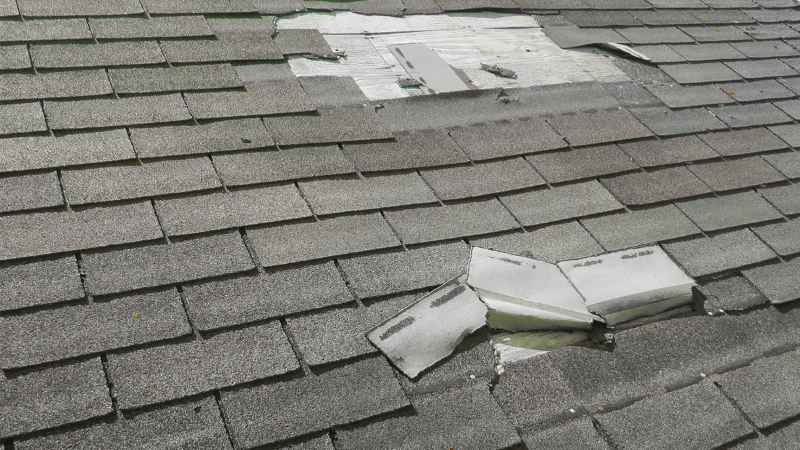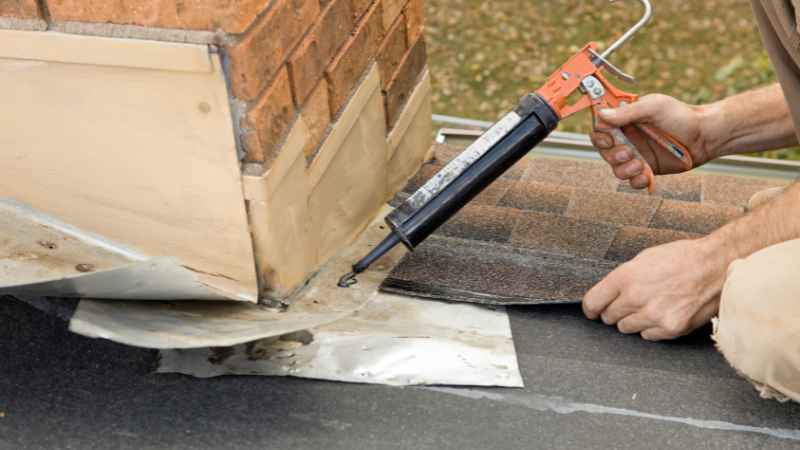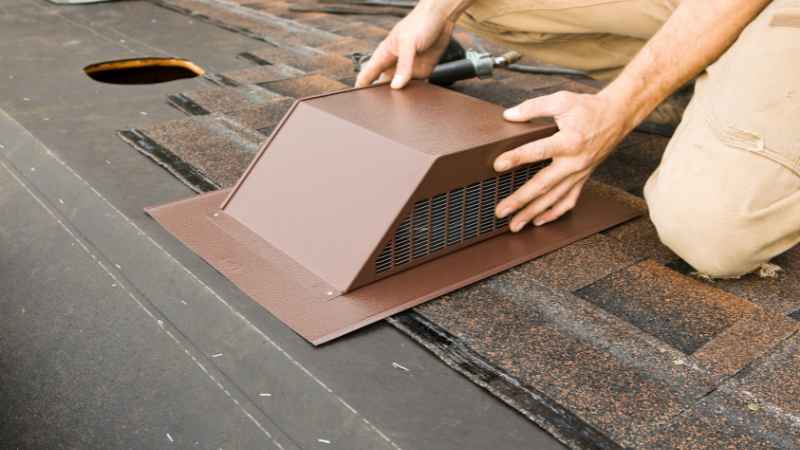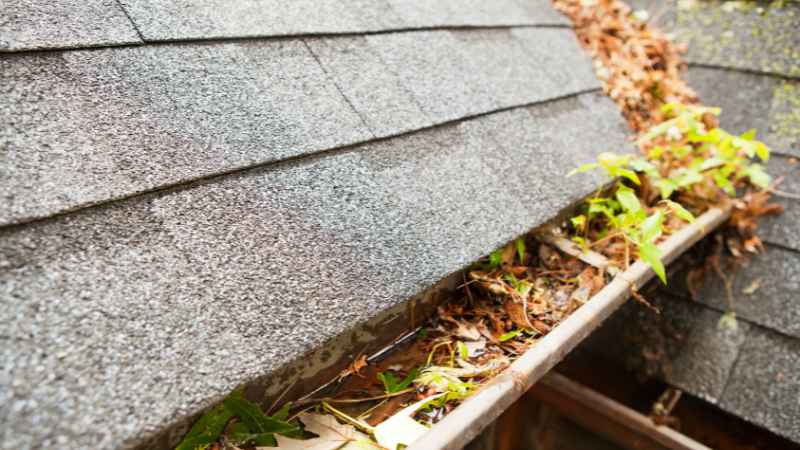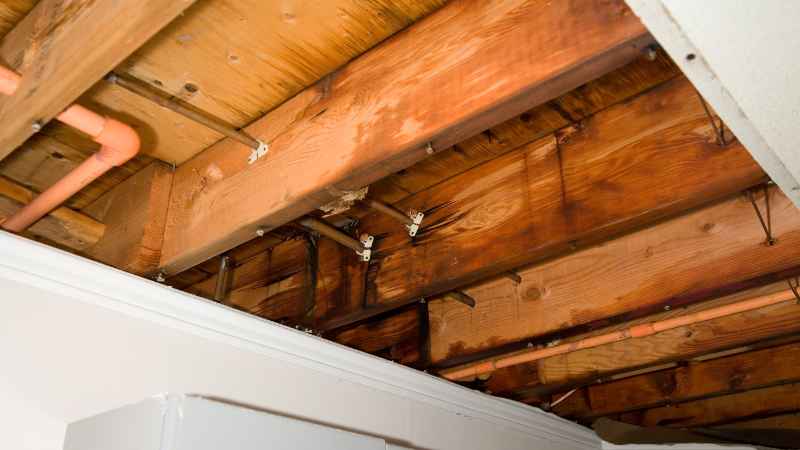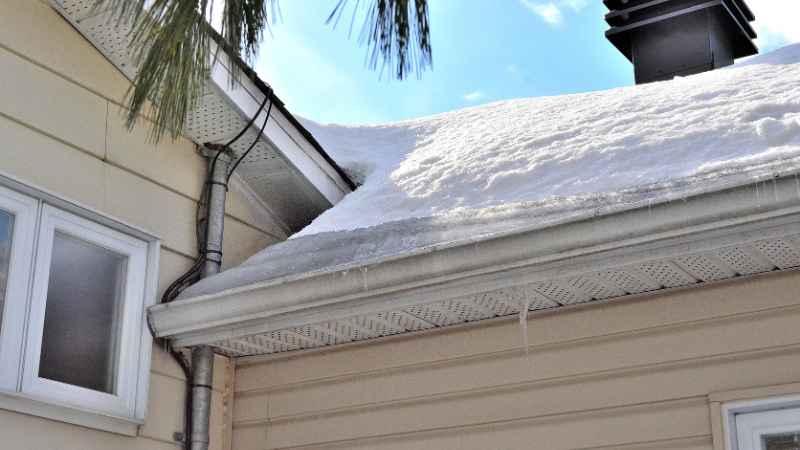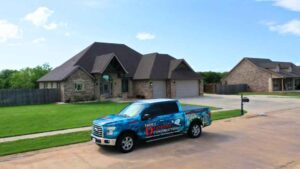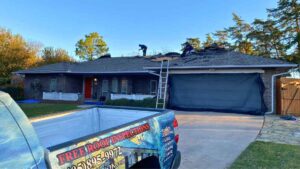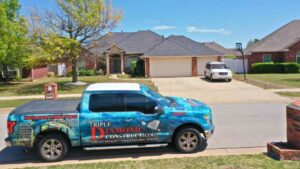If you are noticing stains on your ceiling and are trying to locate a roof leak, it’s important to understand the most common causes and locations. This can also help you narrow down what type of roof leak you might have and what to look for.
Roof Leak Causes And Locations
The most common roof leak causes for residential homes are missing shingles, worn out flashing, clogged gutters, poor attic ventilation, storm damage, and ice dams in the winter.
Unfortunately, these issues can go undetected for months. Homeowners are usually alerted by water stains on their ceilings, but by that time, water has already likely damaged the roof decking, attic insulation, and other areas. Knowing how to identify the most common causes and locations of roof leaks is crucial for homeowners to maintain the integrity of their roofs and prevent costly repairs.
Damaged or Missing Shingles
Missing shingles are among the most common roof leak causes. Shingles are designed to weave together to form a watertight barrier. When one goes missing, water has a direct path to the inside of a home. In addition, one missing shingle can cause others to come lose and expose an ever bigger area.
Location: On roof slope
Cause: High winds, storms, and impact damage are often the cause of missing shingles that lead to roof leaks
How To Identify: If you are trying to locate a roof leak, start by walking around the perimeter of your home and look for any spots with missing shingles. Keep in mind, water can travel 8-12 feet from the source of damage so the missing shingles may or may not be on the same side of your house where the ceiling stains are.
Faulty Flashing
Flashing is a protective barrier installed around chimneys, vents, and skylights to prevent water intrusion. It is also used to connect two slopes of a roof. When flashing becomes damaged or improperly installed, it can compromise the roof’s integrity and lead to leaks.
Location: around vents, chimneys, skylights, or where two slopes meet
Cause: flashing is often made of metal and wears out over time as it is exposed to the elements. Cracks, chips and warped areas allow water to enter the roof system and cause leaks.
How To Identify: Attributing a roof leak to faulting flashing can be hard to do from the ground level of your home. The best way to know for sure is to be on the roof. However, this can be dangerous for the average homeowner and should be left up to professionals.
Roof Vents & Other Penetrations
Openings for vent pipes, skylights, and even solar panels are a common cause of roof leaks. Special fittings, sealant, flashing, or a combination of methods are used to prevent water from entering the roof system but these parts wear out over time. Without regular roof maintenance, water can easily enter weak areas around roof penetrations and provide a direct path into a home’s attic.
Location: Near vent pipe, skylight or other roof penetration
Cause: Roof leaks can develop around these penetrations due to compromised seals or flashing.
How To Identify: Water stains and condensation buildup are the most common warning signs for a roof leak around a vent pipe or skylight.
Clogged Gutters
Accumulated debris in gutters can impede proper water drainage, causing overflow into the roof and walls of your home This overflow can seep beneath shingles and lead to leaks. Regular gutter cleaning is crucial to prevent this issue.
Location: gutter system
Cause: pooling or standing water in gutters backs up into the roof causing leaks inside the home
How To Identify: A roof leak that is forming between the ceiling and wall joint inside your home could be caused by clogged gutters. When trying to locate a roof leak make sure to check your gutters system thoroughly. If you notice debris, clean your gutters to remove the clog. After, call a roofing professional to assess any interior damage.
Poor Ventilation
One of the lesser known causes of roof leaks is poor or inadequate attic ventilation. In high humidity areas like the kitchen or bathrooms, vents are used to pull humid air out of the room and shuttle it into the attic. With proper ventilation, the humid air moves out of the roofing system. Without ventilation, condensation forms on attic insulation especially in the winter months. Over time, the condensation builds up and leaks back into the house through the ceiling.
Location: Roof leaks caused by improper attic ventilation form on the ceiling of a home
Cause: Condensation builds up in the attic from hot, humid air inside the home
How To Identify: High humidity in an attic during the winter months is a good indicator of improper roof ventilation along with noticing wet insulation in your attic without other signs of a roof leak
Hail And Storm Damage
Hail and strong winds are the kryptonite of residential roofing systems. Even strong roofing materials like stone-coated steel are only rated to withstand hail up to two inches in diameter. More common roof types like asphalt shingles can easily be damaged by hail only an inch in size.
Location: Hail damage can be found on almost any part of a roof along with siding, windows, gutters and other areas of the home.
Cause: When hail strikes a shingle it leaves a dent or crack that allows water to enter the roofing system.
How To Identify: Hail dents on a shingle are similar to a bruise on an apple. Depending on the type of roofing material, the dent can be a noticeable spot where granules have been displaced, and the matting underneath shows through.
Winter Ice Dams
During the winter months, ice dams can form on the roof edges. Just like the name implies, the dam prevents water from being able to drain off the roof. Instead, it backs up under the shingles and into the attic resulting in sudden and significant roof leaks.
Location: roof slope
Cause: ice build up and water accumulation causes water to leak into roof system
How To Identify: If you’ve suddenly noticed a roof leak during winter and have a large amount of ice and/or snow on your roof, an ice dam is likely to blame. Getting onto a roof covered in ice is never a good idea and you should call a professional for help ASAP.
When To Call A Roofing Professional
While water stains are usually the first thing homeowners notice, they are one of the last problems to develop. By that point, water has already impacted the roof decking, rafters, insulation, and ceiling drywall. If you are seeing warning signs of a roof leak or problem it’s best to call a local professional as soon as possible to address the root cause and prevent more damage.
Key Takeaways On Roof Leak Causes
Homeowners who can quickly identify roof leak causes are more likely to spend less on repairs and avoid the health hazards of roof leaks like mold and mildew growth. Knowing common roof leak causes and how to spot them is key.
The single best defense against roof leak causes and costly damage is regular maintenance. This includes professional yearly roof inspections to catch small problems and also replace parts designed to wear out like flashing and vent boots. Plus, it helps you avoid having to pay for an early roof replacement!

